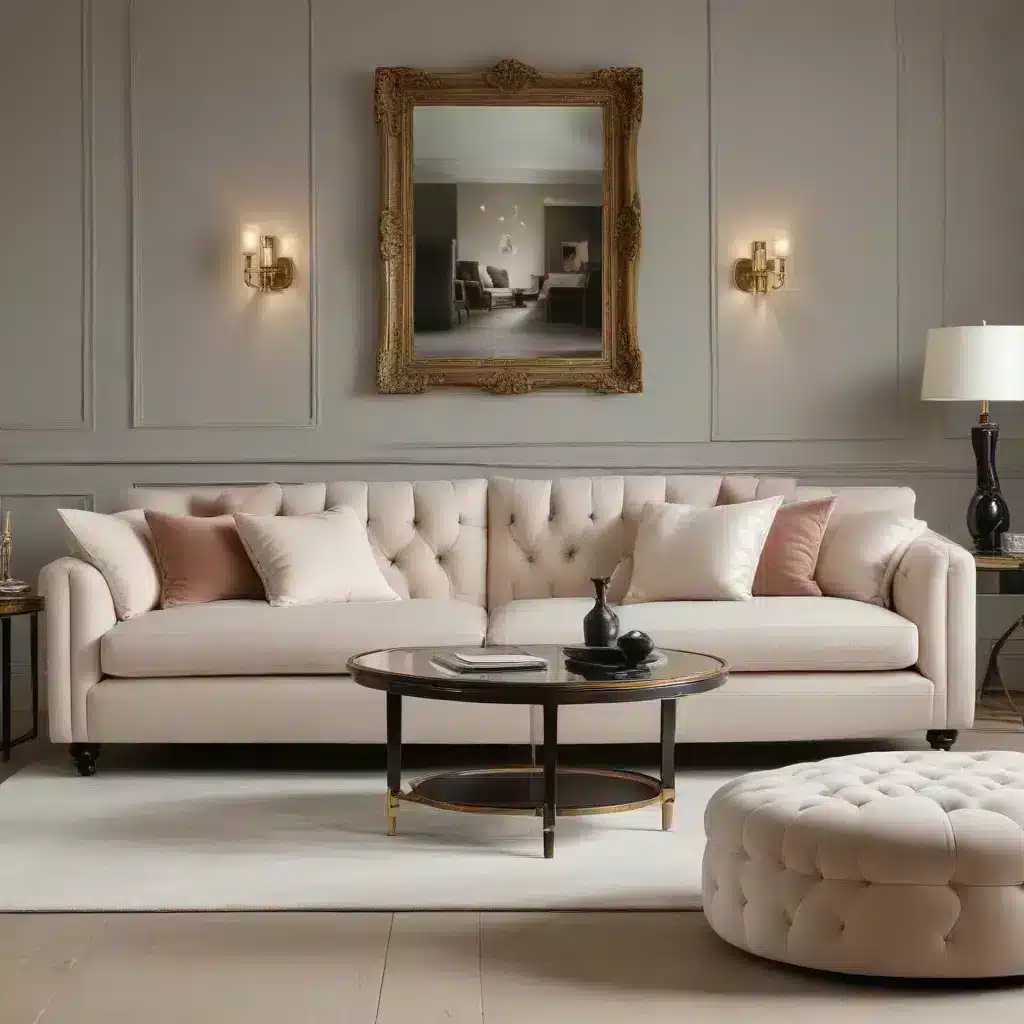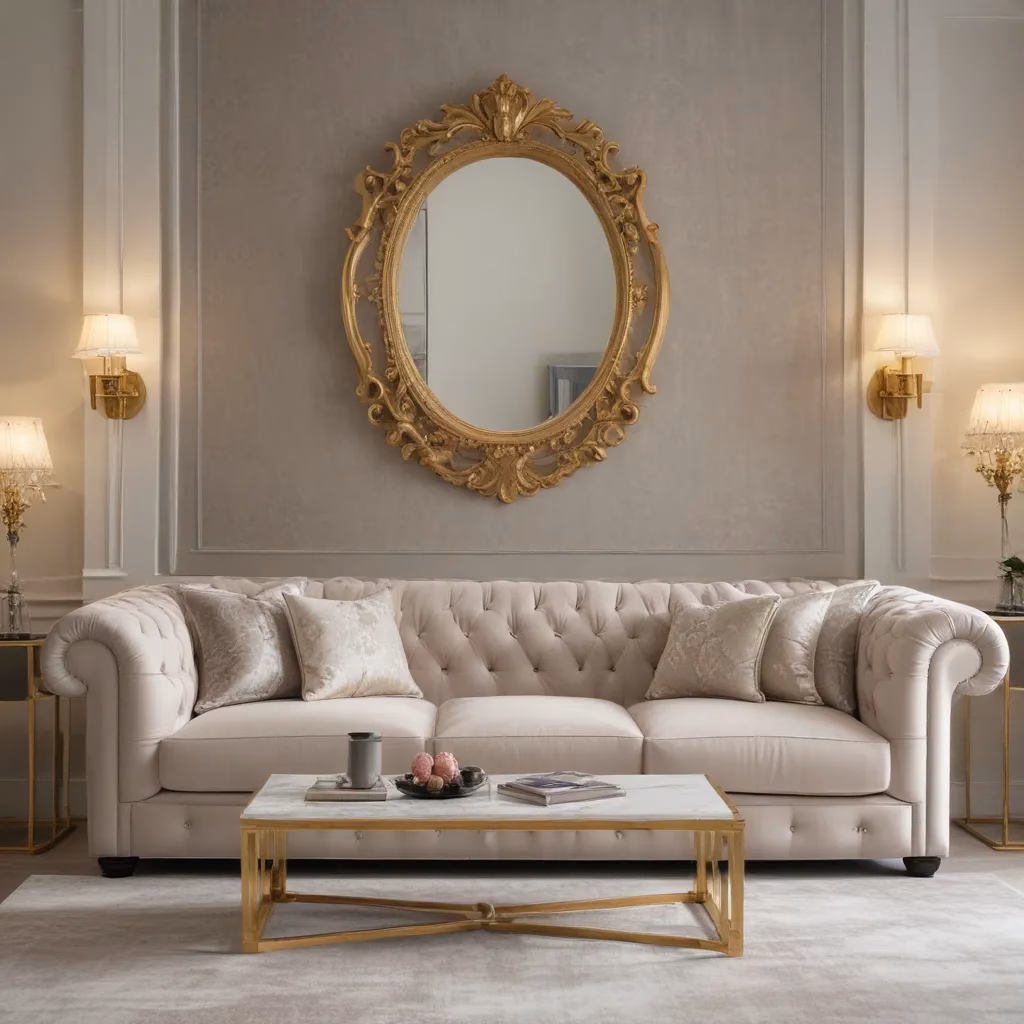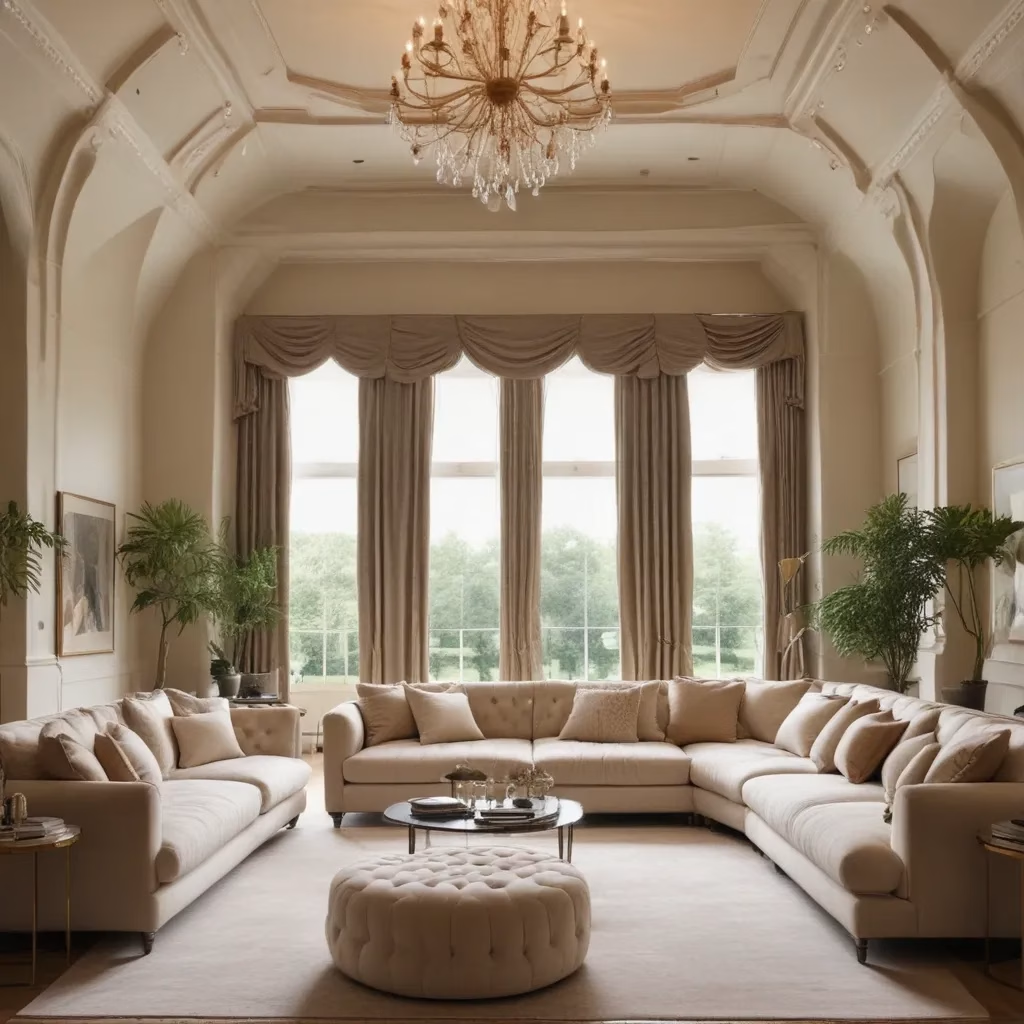
The Heart of the Home: Selecting the Perfect Sofa
As a furniture specialist with years of experience, I’ve seen firsthand how a well-chosen sofa can transform a living space. It’s not just a piece of furniture; it’s the centerpiece that sets the tone for your entire home. When I work with clients, I always emphasize the importance of selecting a sofa that not only looks stunning but also meets their specific needs and lifestyle.
One of the first things I consider when helping a client choose a sofa is the size of their living room. A sofa that’s too large can overwhelm a space, while one that’s too small might look out of place. I remember working with a couple who had just moved into a cozy apartment. They were set on a grand, oversized sectional they’d seen in a showroom, but I gently steered them towards a more proportionate three-seater that fit their space perfectly. The result? A room that felt spacious and inviting, rather than cramped and cluttered.
Another crucial factor in sofa selection is the lifestyle of the homeowners. Do they have young children or pets? Are they frequent entertainers? These considerations will influence not only the style of the sofa but also the choice of materials. For instance, I once worked with a family with three energetic dogs. We opted for a beautiful leather sofa that not only complemented their rustic decor but also stood up to the wear and tear of enthusiastic paws and wagging tails.
The Timeless Appeal of Classic Designs
When it comes to sofa styles, there’s something to be said for the enduring charm of classic designs. These timeless pieces have stood the test of time for good reason – they offer a perfect blend of comfort, functionality, and aesthetic appeal.
One of my personal favorites is the Chesterfield sofa. With its distinctive deep-buttoned upholstery and rolled arms, this iconic design has graced living rooms for centuries. I’ve seen Chesterfields work beautifully in both traditional and contemporary settings. In fact, I recently helped a client incorporate a sleek, modernized Chesterfield into their minimalist loft space. The juxtaposition of the classic form against the stark, industrial backdrop created a captivating focal point.
Another classic that never goes out of style is the English roll arm sofa. Its low, rounded arms and comfortable, deep seat make it a perfect choice for those who prioritize comfort without sacrificing elegance. I once specified an English roll arm sofa for a client’s country cottage, upholstered in a soft, natural linen. The result was a living room that exuded warmth and invited relaxation.
For those who appreciate clean lines and simplicity, the Lawson sofa is an excellent choice. Its boxy shape and separate back cushions offer versatility in terms of comfort and style. I’ve found that Lawson sofas work particularly well in smaller spaces, as their streamlined silhouette doesn’t overwhelm the room.
Contemporary Trends in Sofa Design
While classic designs have their place, I’m also excited by the innovative trends emerging in contemporary sofa design. These modern pieces often push the boundaries of form and function, offering new solutions for today’s living spaces.
One trend I’ve been particularly impressed with is the rise of modular sofas. These versatile pieces allow for endless configuration possibilities, adapting to different room layouts and seating needs. I recently worked with a client who hosts large gatherings regularly but also enjoys quiet evenings at home. We chose a modular sofa system that could be arranged as a spacious sectional for parties and easily reconfigured into a cozy love seat and ottoman for everyday use.
Another contemporary trend I’m seeing more of is the integration of technology into sofa design. From built-in USB ports for charging devices to hidden compartments for storing remotes and tablets, these tech-savvy sofas cater to our increasingly connected lifestyles. While working on a home theater project, I specified a reclining sofa with integrated cup holders and a wireless charging pad – features that perfectly complemented the high-tech entertainment setup.
Sustainable materials are also making waves in sofa design. I’m particularly excited about the advancements in eco-friendly fabrics and recycled materials. For environmentally conscious clients, I’ve been able to source beautiful sofas made with organic cotton upholstery, FSC-certified wood frames, and cushion fills made from recycled plastic bottles. It’s wonderful to see that luxury and sustainability can go hand in hand.
The Art of Upholstery: Fabrics and Finishes
In my experience, the choice of upholstery can make or break a sofa. It’s not just about aesthetics – the right fabric or leather can significantly impact the longevity and functionality of your seating.
When it comes to fabric sofas, I always encourage clients to consider their lifestyle before making a selection. For busy households with children or pets, performance fabrics have been a game-changer. These innovative textiles are designed to resist stains, fading, and wear, making them ideal for high-traffic areas. I recall a client who was hesitant to choose a light-colored sofa due to her young children. We found a beautiful cream performance fabric that not only looked elegant but also withstood spills and smudges with ease.
Leather sofas, on the other hand, offer a unique combination of durability and luxurious appeal. I’m particularly fond of full-grain leather for its natural beauty and ability to develop a rich patina over time. However, it’s important to note that leather requires specific care to maintain its appearance. I always provide my clients with detailed care instructions to ensure their leather sofas age gracefully.
For those looking to make a bold statement, velvet upholstery can add a touch of opulence to any living space. I recently worked on a project where we paired a deep blue velvet sofa with brass accents, creating a stunning focal point in the room. The key with velvet is to balance it with other textures to avoid overwhelming the space.
Comfort Considerations: Support and Cushioning
While style is important, I always remind my clients that comfort should be a top priority when selecting a sofa. After all, a beautiful sofa that’s uncomfortable to sit on will quickly lose its appeal.
One of the most crucial elements of a comfortable sofa is its support system. In my experience, eight-way hand-tied springs offer the best combination of support and durability. This traditional construction method creates a responsive, even seat that maintains its comfort over time. I’ve had clients who were initially skeptical about investing in this feature, but after experiencing the difference, they’ve become true converts.
Cushion fill is another important factor in sofa comfort. While many people assume that softer is always better, I’ve found that a balance of softness and support is ideal. High-resilience foam cores wrapped in down or polyester fiber offer a plush feel with enough structure to prevent sagging. For clients who prefer a softer seat, I often recommend cushions with a higher proportion of down or down alternative fill.
The depth and height of the seat are also crucial considerations. I always encourage clients to “test drive” a sofa before making a purchase. What feels comfortable to one person may not suit another, depending on their height and personal preferences. I remember working with a tall client who struggled to find a sofa that provided adequate support for his frame. We eventually found a model with a deeper seat and higher back that offered the perfect fit.
Space Planning: Sofa Placement and Room Layout
As a furniture specialist, I’ve learned that the placement of a sofa can dramatically impact the flow and functionality of a room. It’s not just about finding a spot where the sofa fits; it’s about creating a layout that enhances the overall living experience.
One of the first things I consider when planning a room layout is the focal point. This could be a fireplace, a picture window with a view, or a large-screen TV. The sofa should generally be oriented towards this focal point to create a sense of purpose in the room. I once worked with a client who had a beautiful bay window overlooking a garden. We positioned the sofa to face the window, creating a serene space for relaxation and contemplation.
Traffic flow is another crucial factor in sofa placement. I always ensure there’s enough space to move comfortably around the sofa without feeling cramped. In open-plan living areas, sofas can be used to define separate zones within the space. For instance, in a recent project, we used a large L-shaped sectional to delineate the living area from the dining space in a loft apartment.
The size of the room also plays a significant role in sofa selection and placement. In smaller spaces, I often recommend choosing a sofa with legs that elevate it off the floor. This creates a sense of lightness and helps make the room feel more spacious. Conversely, in larger rooms, a substantial sofa or sectional can help anchor the space and prevent it from feeling empty or cavernous.
Care and Maintenance: Preserving Your Sofa’s Beauty
Investing in a quality sofa is just the first step – proper care and maintenance are essential to ensure its longevity and keep it looking its best. Over the years, I’ve developed a set of best practices that I share with all my clients.
Regular vacuuming is crucial for all types of sofas, regardless of the upholstery material. It removes dust, dirt, and debris that can wear down fabrics over time. For fabric sofas, I recommend using the upholstery attachment and going over the entire surface, including the back and sides, at least once a week.
Dealing with spills promptly is key to preventing stains. I always advise clients to blot (never rub) spills immediately with a clean, white cloth. For more stubborn stains, it’s best to consult the manufacturer’s cleaning instructions or seek professional help. I recall a panicked call from a client who had spilled red wine on her new white linen sofa. Thanks to quick action and the right cleaning technique, we were able to remove the stain completely.
For leather sofas, regular dusting and occasional conditioning are essential to maintain the material’s suppleness and prevent cracking. I recommend using a soft, dry cloth for dusting and applying a leather conditioner every 6-12 months, depending on the sofa’s exposure to sunlight and heat.
Protecting your sofa from direct sunlight is also important, especially for leather and vibrant fabrics that can fade over time. In cases where repositioning the sofa isn’t possible, I often suggest using window treatments to filter harsh sunlight.
The Role of Accessories: Enhancing Your Sofa’s Appeal
While the sofa itself is undoubtedly the star of the show, the right accessories can elevate its appearance and enhance the overall aesthetic of your living space. As a furniture specialist, I’ve found that thoughtfully chosen accessories can transform a good sofa into a great one.
Throw pillows are perhaps the most versatile sofa accessory. They offer an opportunity to introduce color, texture, and pattern to your seating arrangement. I often advise clients to choose a mix of sizes and shapes for visual interest. For instance, on a neutral-toned sofa, I might suggest combining solid-colored velvet pillows with patterned linen ones for a layered, sophisticated look.
Throws are another excellent accessory that can add both style and functionality to your sofa. A beautifully draped throw can introduce a pop of color or texture while also providing warmth on chilly evenings. I remember working with a client who had a sleek, modern leather sofa. We added a chunky knit throw in a contrasting color, which softened the look of the leather and made the space feel more inviting.
Side tables and coffee tables are essential companions to any sofa. They provide a surface for drinks, books, and decorative objects, enhancing the functionality of your seating area. When selecting tables, I consider the scale and style of the sofa to ensure a harmonious pairing. For a low-profile modern sofa, I might recommend sleek, minimalist tables with clean lines. In contrast, a traditional Chesterfield could be beautifully complemented by an ornate wooden coffee table.
Lighting is another crucial element in creating the perfect sofa setting. A well-placed floor lamp can provide task lighting for reading, while table lamps on side tables can create a warm, ambient glow. I once worked on a project where we installed a striking arc floor lamp over a sectional sofa, creating a dramatic focal point in the room.
Sofa Trends: What’s on the Horizon?
As someone deeply immersed in the world of furniture design, I’m always excited to see the emerging trends in sofa styles and features. While timeless designs will always have their place, innovative approaches to sofa design are continually pushing the boundaries of form and function.
One trend I’m particularly intrigued by is the rise of multifunctional sofas. As living spaces become more compact, especially in urban areas, furniture that can serve multiple purposes is increasingly valuable. I’ve been seeing more sofas with integrated storage solutions, pull-out beds, and adjustable backs that can transform the piece from a standard sofa to a lounger or even a dining bench.
Another exciting development is the incorporation of smart technology into sofa design. From built-in speakers and charging ports to app-controlled reclining mechanisms, these high-tech features are bringing sofas into the 21st century. I recently specified a sofa for a tech-savvy client that included voice-activated position control – a feature that seemed futuristic just a few years ago.
Sustainability continues to be a significant trend in sofa design, with more manufacturers focusing on eco-friendly materials and production methods. I’m seeing an increase in the use of recycled fabrics, responsibly sourced wood, and non-toxic, low-VOC foams. This shift towards sustainability not only benefits the environment but also appeals to consumers who are increasingly conscious of the ecological impact of their purchases.
In terms of aesthetics, I’m noticing a move towards softer, more organic forms. Curved sofas and rounded edges are making a comeback, offering a welcome alternative to the sharp angles that have dominated contemporary design in recent years. These softer silhouettes can add a sense of flow and movement to a room, creating a more relaxed and inviting atmosphere.
Making the Investment: Quality vs. Cost in Sofa Selection
As a furniture specialist, one of the most common dilemmas I encounter with clients is balancing quality with cost when selecting a sofa. It’s a significant investment, and understandably, many people are tempted by lower-priced options. However, I always encourage clients to consider the long-term value of their purchase.
In my experience, investing in a high-quality sofa often proves more economical in the long run. Well-constructed sofas with durable frames, superior cushioning, and high-grade upholstery tend to maintain their comfort and appearance for many years. I’ve had clients who initially balked at the price of a premium sofa, only to thank me years later when their piece still looks and feels as good as the day they bought it.
That said, I understand that not everyone has the budget for top-of-the-line furniture. In these cases, I work with clients to identify where they can compromise without significantly impacting the sofa’s quality. For instance, opting for a good-quality polyester blend instead of pure linen or choosing a less expensive wood for non-visible parts of the frame can help reduce costs without sacrificing overall quality.
It’s also worth considering the specific needs of the household. For a formal living room that sees occasional use, it might be worth splurging on that exquisite silk-upholstered showpiece. However, for a family room that endures daily rough-and-tumble use, a more moderately priced sofa with durable, easy-clean fabric might be the wiser choice.
Ultimately, I advise clients to view their sofa as an investment in their daily comfort and their home’s aesthetic. By choosing a well-made piece that truly suits their needs and tastes, they’re likely to enjoy it for many years to come, making it a worthwhile investment indeed.
Conclusion: Creating Your Perfect Living Space
As we’ve explored the many facets of sofa selection and design, it’s clear that choosing the right sofa involves more than just picking a style you like. It’s about finding a piece that complements your lifestyle, enhances your living space, and provides comfort and enjoyment for years to come.
Remember, there’s no one-size-fits-all solution when it comes to sofas. What works beautifully in one home may not be the best choice for another. That’s why I always encourage my clients to take their time, do their research, and really think about how they live and what they need from their furniture.
Whether you’re drawn to the timeless elegance of a classic Chesterfield, the versatility of a modern modular system, or the cutting-edge features of a smart sofa, the key is to choose a piece that resonates with you and your home. And don’t forget the power of accessories to personalize your sofa and make it truly your own.
If you’re feeling overwhelmed by the options or unsure where to start, don’t hesitate to seek expert advice. A professional furniture specialist can help guide you through the selection process, ensuring you make a choice you’ll be happy with for years to come.
Ready to find your perfect sofa? Visit Sofa Spectacular to explore a wide range of options and get expert guidance on creating your ideal living space. Your perfect sofa is waiting – why not start your search today?



